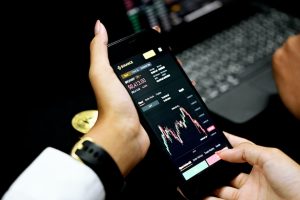Exponential Moving Average (EMA) is a popular technical analysis tool used by forex traders to identify trends and potential trade entry and exit points. The EMA is a type of moving average that gives more weight to recent price data, making it more responsive to price changes than the simple moving average (SMA). In this article, we will explain how to use EMA in forex trading.
What is EMA?
EMA is a type of moving average that is calculated by giving more weight to recent price data. In contrast to the SMA, which gives equal weight to all prices, the EMA puts more emphasis on the most recent prices. This means that the EMA is more reactive to price changes than the SMA.
EMA is calculated by taking the average of a specific number of prices, with more weight given to the most recent prices. For example, a 10-day EMA would give more weight to the last 5 days of price data than the first 5 days. The formula for calculating EMA is:
EMA = (Price – EMA previous day) x (2 / n+1) + EMA previous day
Where:
Price = the current price
EMA previous day = the EMA from the previous day
n = the number of days in the EMA calculation period
How to use EMA in forex trading
1. Identifying trends
EMA is a useful tool for identifying trends in the forex market. Traders can use EMA to determine the direction of the trend and potential trade entry and exit points. When the price is above the EMA, it indicates an uptrend, while a price below the EMA suggests a downtrend.
2. Trade entry and exit points
EMA can be used to identify potential trade entry and exit points. Traders can use the EMA crossover strategy, which involves buying when the shorter-term EMA crosses above the longer-term EMA and selling when the shorter-term EMA crosses below the longer-term EMA.
For example, if a trader is using a 10-day EMA and a 20-day EMA, a buy signal would be generated when the 10-day EMA crosses above the 20-day EMA. Conversely, a sell signal would be generated when the 10-day EMA crosses below the 20-day EMA.
3. Stop loss placement
EMA can also be used to determine stop loss placement. Traders can use the EMA as a trailing stop by placing their stop loss order below the EMA in an uptrend and above the EMA in a downtrend. This strategy can help traders limit their losses and protect their profits.
4. Confirmation of price action
EMA can be used to confirm price action. Traders can use the EMA to confirm a breakout or a reversal. For example, if the price breaks above the EMA, it confirms an uptrend, while a break below the EMA confirms a downtrend.
5. Trading with multiple EMAs
Traders can use multiple EMAs to get a clearer picture of the market trends. For example, a trader can use a 50-day EMA and a 200-day EMA to identify long-term trends. When the 50-day EMA is above the 200-day EMA, it indicates a bullish trend, and vice versa.
Conclusion
EMA is a powerful tool that can help forex traders identify trends, potential trade entry and exit points, stop loss placement, and confirm price action. Traders should use EMA in combination with other technical analysis tools and fundamental analysis to make informed trading decisions. It is essential to backtest any strategy before using it in live trading and to practice proper risk management to minimize losses.





